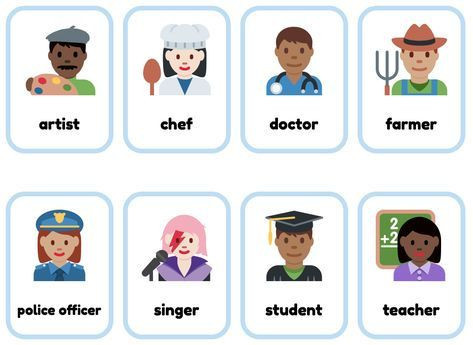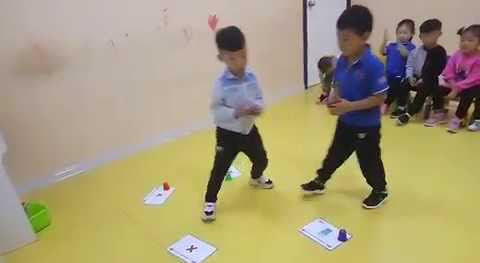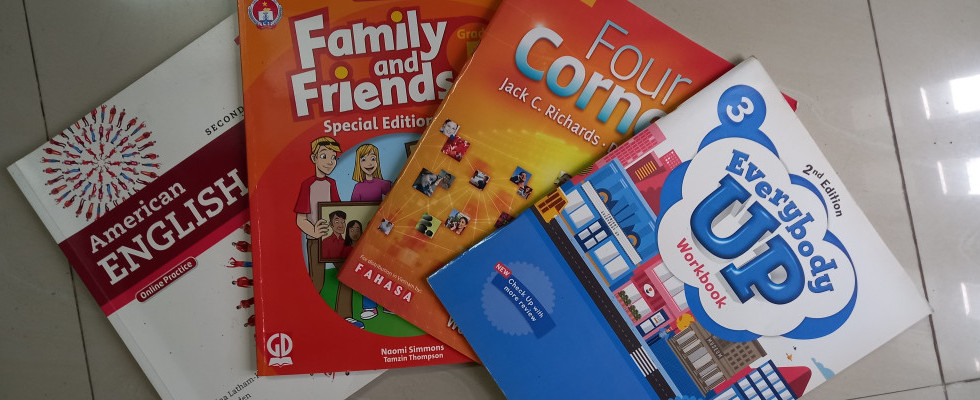The Four English Learning Skills.
When learning a language, there are four abilities that we must master in order to communicate effectively. Listening is usually the first skill learned when learning a new language, followed by speaking, reading, and lastly writing. The four “linguistic skills” are as follows.
- Listening: People who are learning a new language hear it spoken first.
- Speaking: At some point, they attempt to repeat what they have heard.
- Reading: They later see the spoken language symbolically represented in print.
- Writing: Finally, they write these symbols down on paper.
Today we are going to cover the listening skill and how to help your students learn this skill quicker.
The Listening Skill
There are a few things that make mastering listening difficult. It is not enough to have a vast vocabulary and solid grammar to understand speech and recordings in English.
You must also know how to pronounce English correctly. And that is not enough either, accents and styles of talking bring their own problems.
Each speaker lends their own quirks to the language: their accent, how clearly they speak, and how quickly they talk. Even if you have a high level of English, comprehending a native speaker can be difficult if you have never heard them speak before.
It is not made any easier by the language itself.
There are many terms in English that change significantly in spelling and sound. And then there are some words that sound the same and are spelled the same yet have different meanings and can only be recognized in the context of the whole dialogue. It’s nearly impossible to recognize such words in conversation if you’ve only ever seen them in a book.
How to improve your Students Listening Skills.
If you want to improve your students’ English listening skills, you must utilize a strategy that is most effective for them. Some people study best in a classroom setting, while others prefer to practice alone.
You may develop your students’ English listening skills quickly if you’re in they are in the proper environment with the right tools. Some may like learning in groups and some may like learning alone.
Are you ready to begin? We need to figure out what type of learners your students are first.
Learning Styles.
The following are the three primary types of learning situations:
You’ll need to talk with your students about which option they prefer.
Independent lessons. This entails studying English at their leisure. If they are easily distracted in a classroom, are too busy for a traditional class, or have to move around a lot for work, this may be a good alternative for them. Online lessons work well with this type of student.
The classroom. If they enjoy talking with other students, are uncomfortable alone with an instructor, or have difficulties focusing on their own, this might be the choice for them.
Individual Tuition. If they’re hesitant with other students or find it easier to ask questions of a teacher or discussion partner, these lessons might be for them. Teaching one-on-one presents its own problems, mainly solved by good preparation and good content.
Whatever style of learning your new ESL student prefers, there are ways you can organize lessons for them and boost their listening skills progress.
Tips for students Listening outside the classroom.
Make a schedule for practicing on a regular basis.
For example, aim for a manageable amount of time each day to listen to something in English, such as 15 minutes at lunch, 15 minutes before breakfast, or 15 minutes in the evening
Indulge your passions.
When you’re listening to something that interests you or that you appreciate, you’re more likely to be inspired to learn. If you want to watch movies, that’s OK. But keep in mind that you won’t be able to see the person speaking in an exam.
So nonvisual listening is also an excellent practice option. Short audio news bits are frequently found on podcasts, online radio stations, and foreign news websites. Select the stories that spark your interest.
Practice on a regular basis.
You will hear more if you listen more. Return to a text you’ve already listened to and practice listening for new ideas. If you are studying with a book, this can be a terrific way to listen to the texts. Keep track of new terms and phrases you come across; this will help you improve your reading, listening, speaking, and writing skills.
Subtitles.
Use subtitles for TV programs and films in English. Your learner will pick up a lot of English just by watching or listening to English-language shows or films. Avoid dubbed shows and listen to the original soundtrack instead.
Tips for teaching Listening skills.
When teaching listening skills it is a good idea to pre-plan your lesson well. This is one way I teach English listening skills.
Introduction and Discussion.
Introduces the listening topic’s theme. If your listening topic is food, for example, you may ask your students what their favorite food is and when and where their last restaurant meal was. And, more importantly, did they have a nice time?
Alternatively, if your theme is travel, you may ask students to list five things they take with them when going on holiday. It’s preferable to have students discuss the question with their partner for a few minutes before immediately eliciting some responses from the class.
Pre-Listening Exercise
After that, assign a pre-listening exercise to the students. This can be accomplished in a variety of ways. Predicting what will happen by providing an image on the topic or outlining the benefits and drawbacks of various options are two of my faves. For example, if the topic is going out to restaurants, what are the benefits and drawbacks, as well as any potential problems?
This will serve as a natural transition into the listening activity.
Listening for the first time.
First, get the pupils to listen for the broader picture. If you utilized a pre-listening exercise, you can have them check to see if their predictions were correct. Give them some basic true or false questions at the end of the first hearing. This will determine whether or not they comprehended what they had just heard.
And it will help you, as the teacher, evaluate your students listening skills.
You can also get the students to paraphrase what they have just heard.
Have students compare answers with a partner and then quickly go over them together. Don’t spend too much time with this because they’ll listen one more time before more discussion.
Listening for the second time.
Give students some more challenging comprehension questions after they have listened again, double-check answers with a partner, and then with the rest of the class.
If required, you can spend a little more time discussing the responses than you did in the previous phase.
Another option is to read the text out loud slowly and have the pupils record what they hear. Remember, this should only be used by people with fair to good writing skills.
Pronunciation
There are always some words that are difficult to pronounce for your students. You will want to focus a little on pronunciation.
Choose the words that your students had problems with pronouncing and write them on the board. A good way to help your students with pronunciation is to break the difficult words down into syllables. For example; Pro/nun/ci/a/tion.
Keep it Fun.

My classroom ethos, whatever level of the student, is Laugh and Learn. Mix up your lesson with some listening games and your students will be only too happy to learn.
One of the best games that involve the students and get them to concentrate on the listening skill lesson is “How many times”
It is very easy and you simply choose one word from the text or script the students will listen to and count the number of times it has been said. After listening you ask the students how many times has the word “the” been said. ( It can be any word ).
Make sure you have counted correctly as it can be embarrassing if you get it wrong. This works best if you have a transcript of the listening exercise.
Sit back and watch them intently read the transcript to win points for their team. Yes, I turn it into a full-on game.
Conclusion.
Remember that the best listening tasks for ESL students are those that are just slightly beyond their level. This is how students improve their listening abilities.
Remember to have fun and enjoy yourself. A fun teacher who assists them with their studying will be well-received by the students.
My name is Stephen and I have been teaching ESL for over 15 years and have my own school. I also place teachers across Vietnam into both private and public schools. I am also the author and owner of this website.
You can check out my school on the YouTube link below.
Any or all links on this site may be affiliate links, and if you purchase something through those links I will make a small commission on them.
There will be no extra cost to you and at times due to my affiliation, you could actually save money.
You can read our full affiliate disclosure here.











































